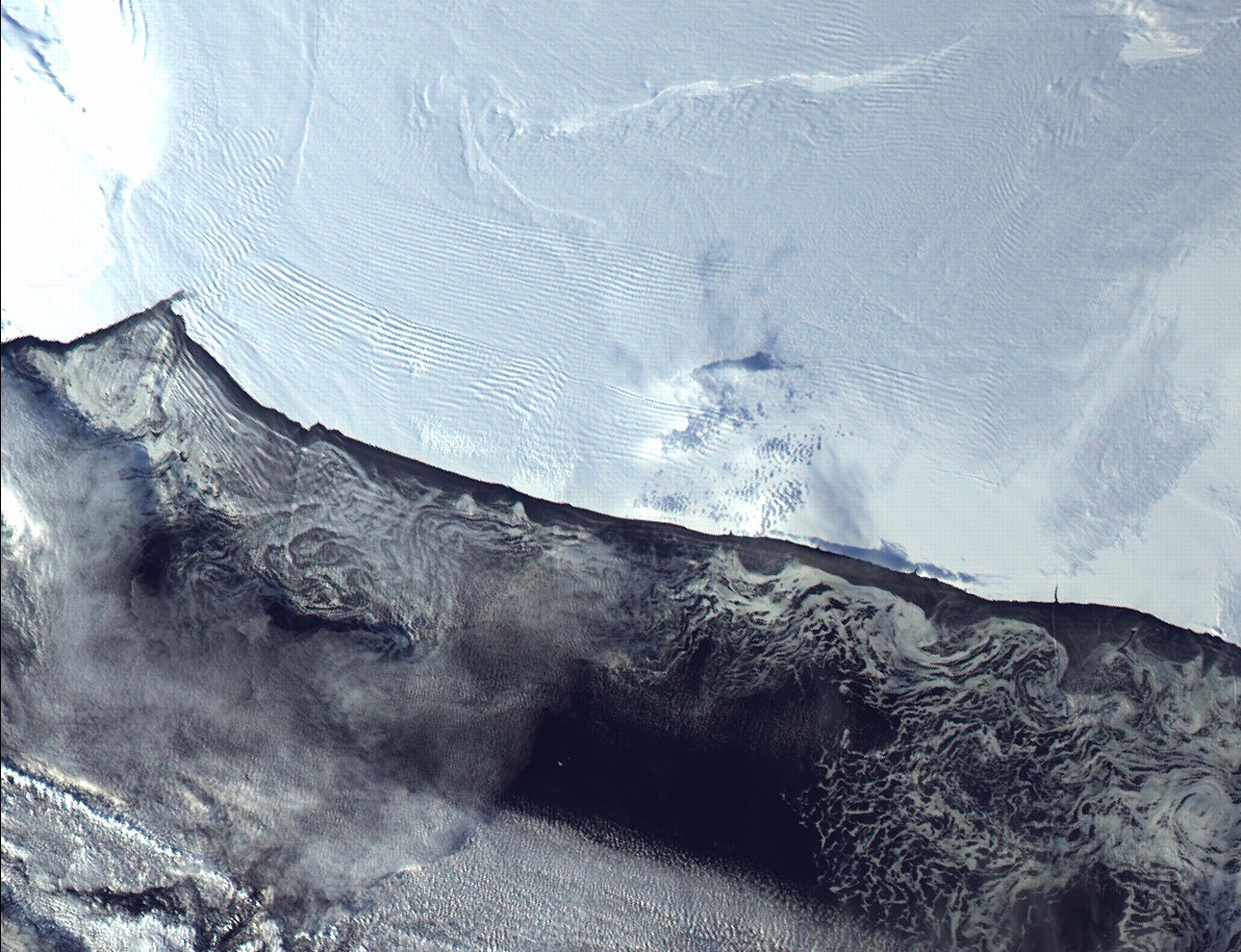Weird 'Gravity' Waves Above Antarctica Caused by Ice Vibrations

Peculiar atmospheric waves that have puzzled scientists since they were spotted in Antarctica a few years ago, above the massive Ross Ice Shelf, may have a source: Tiny vibrations in the ice are traveling miles into the sky to create huge atmospheric ripples.
Stretching between Antarctica and the Ross Sea, the Ross Ice Shelf is the world’s largest body of ice. It is an estimated 182,000 square miles (472,000 square kilometers), or approximately the size of California, New Hampshire and Vermont combined.
Since ice thickness is one factor that determines the size of the resulting atmospheric ripples, scientists could someday use measurements in the air disruptions to monitor the Ross Ice Shelf, said lead study author Oleg Godin, a professor of physics at the Naval Postgraduate School in Monterey, California. [Infographic: Dive into Earth's Atmosphere Top to Bottom]
Wonky waves
The atmospheric waves, also sometimes referred to as gravity waves, were found in lidar measurements taken between 2011 and 2015 at the research station in McMurdo Sound on Ross Island, which is one of the anchors of the Ross Ice Shelf. (Lidar is similar to radar but uses a pulsing infrared laser in place of radio waves.) The lidar measurements revealed waves that occurred in periods that varied from 3 to 10 hours and at an altitude of 20 to 70 miles (30 to 115 km), according to the research published in February in the Journal of Geophysical Research: Space Physics. Atmospheric waves are everywhere, but the consistency of these waves made them unique, Godin said.
Godin and his co-author, Nikolay Zabotin, a research professor at the University of Colorado Boulder, came up with the hypothesis that vibrational waves within the Ross Ice Shelf were causing these strange atmospheric disruptions.
To test this idea, they created two simplified mathematical models of the ice shelf, one where it was approximated as a smooth rectangle and another where it was a layered fluid. The models also accounted for the ice sheet's elasticity, density and thickness.
They calculated how long it would take vibrations in the ice to complete one cycle and both models produced ice vibrations with periods of 3 to 10 hours, matching the period seen in atmospheric waves from the previous study. Their calculations also suggested that the ice vibrations would lead to atmospheric ripples with vertical wavelengths of 12 to 18 miles (20 to 30 km) — also matching the observations from the past study. Their models suggest that the strange, consistent atmospheric waves found over the Ross Ice Shelf are likely transferred directly from vibrations in the ice shelf. [See Stunning Photos of Antarctic Ice]
Sign up for the Live Science daily newsletter now
Get the world’s most fascinating discoveries delivered straight to your inbox.
Scientists don't know for certain what causes the ice shelf vibrations, but it's probable that sea swells play a significant role, Godin said. That's because the ice shelf behaves sort of like a raft, delicately attached to the land around it. Even small vibrations in the ice shelf would result in clear atmospheric ripples because air pressure decreases with altitude; as the vibrations reach higher altitudes with less pressure, they would grow in amplitude, the researchers explained.
Monitoring the ice
If the theory holds up, atmospheric waves could someday offer an alternative way to explore the Ross Ice Shelf, since the speed of the waves in the ice is directly related to its thickness, Godin said.
"The important question is: 'Can we make atmospheric measurements accurately enough to monitor the changes in the mass of the Ross Ice Shelf?'" he said. "Can we monitor the changes in geometry [and] where it's grounded?"
Godin is confident that atmospheric waves could reveal this information, but he doesn't know if the results would be accurate enough to monitor changes over time.
The researchers are already planning to obtain more detailed measurements of atmospheric waves over the ice shelf using advanced radar techniques. Godin also hopes their simplified models will inspire others to improve upon this theory, potentially providing a new way for scientists to watch over the Antarctic ice.
Godin and his colleagues detailed their work online Oct. 10 in the Journal of Geophysics Research: Space Physics
Original article on Live Science.










